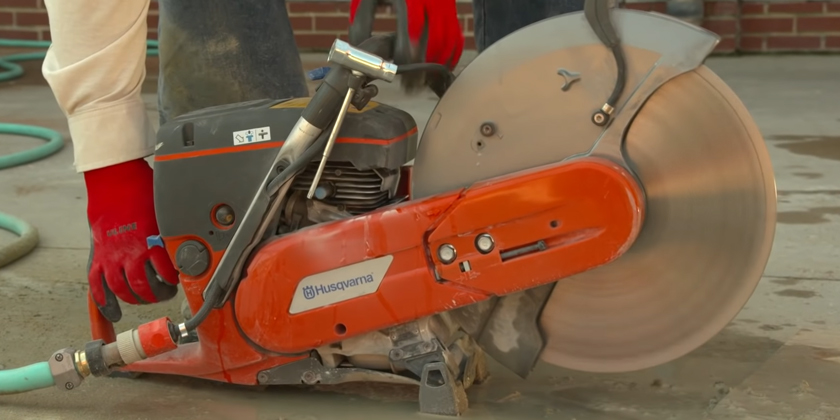Controlling Respirable Crystalline Silica
The Occupational Safety and Health Administration requires employers to limit workers exposure to respirable crystalline silica on the job. Hence, the video below and the chart on this page show the standards and requirements necessary for tasks performed using handheld power saws utilizing any diameter of blade. Using these standards helps you with power saw exposure control.
When used properly these methods effectively limit workers’ exposure to potentially harmful silica dust. The video below shows the method for reducing exposure while using a handheld power saw. However, the same principle applies to any power saw. In fact, many tools used for cutting various stone products require these methods of reducing dust. This is especially true of high dust producing equipment.
Operating Power Saws Safely
In order to comply with the table below, the water delivery system must be integrated with the saw and must continuously feed water to the blade. Furthermore, an integrated water delivery system is one that is supplied by the manufacturer. Additionally, it is one that is developed to be used with that specific make and model of saw. So saws that have been modified do not necessarily meet this requirement.
The operators also makes sure that the amount of water is sufficient to minimize release of visible dust. Therefore it is necessary to regularly check the water source, nozzles and hoses for any damage that might inhibit the flow of water.
Operators Checklist
- Damaged Nozzle Check
- Check Water Pressure
- Remove Clogs
- Check Connections
Handheld Saw Maintenance
Operators also perform regular maintenance to power saws to keep them in good working order. Maintenance tasks often recommended by saw manufacturers often include the following:
- Use the proper type and size of blade.
- Always supply a sufficient amount of water to the blade.
- Inspect the saw for wear and damage.
- Follow a regular maintenance schedule.
Cleaning Up Slurry
It is recommended that operators clean up slurry promptly and properly so the water does not dry. Hence, minimizing the potential for silica dust being released into the air. On the other hand, a concrete water treatment plant can effectively simplify the slurry cleanup process.
Power Saw Exposure Control
| Specified Exposure Control Methods When Working With Materials Containing Crystalline Silica | |||
|---|---|---|---|
| Equipment / Task | Engineering and Work Practice Control Methods | Required Respiratory Protection and Minimum Assigned Protection Factor (APF) | |
| ≥ 4 hours/shift | > 4 hours/shift | ||
| (ii) Handheld power saws (any blade diameter) | Use saw equipped with integrated water delivery system that continuously feeds water to the blade.
Operate and maintain tool in accordance with manufacturer’s instructions to minimize dust emissions. |
||
| – When used outdoors | None | APF 10 | |
| – When used indoors or in an enclosed area. | APF 10 | APF 10 | |

